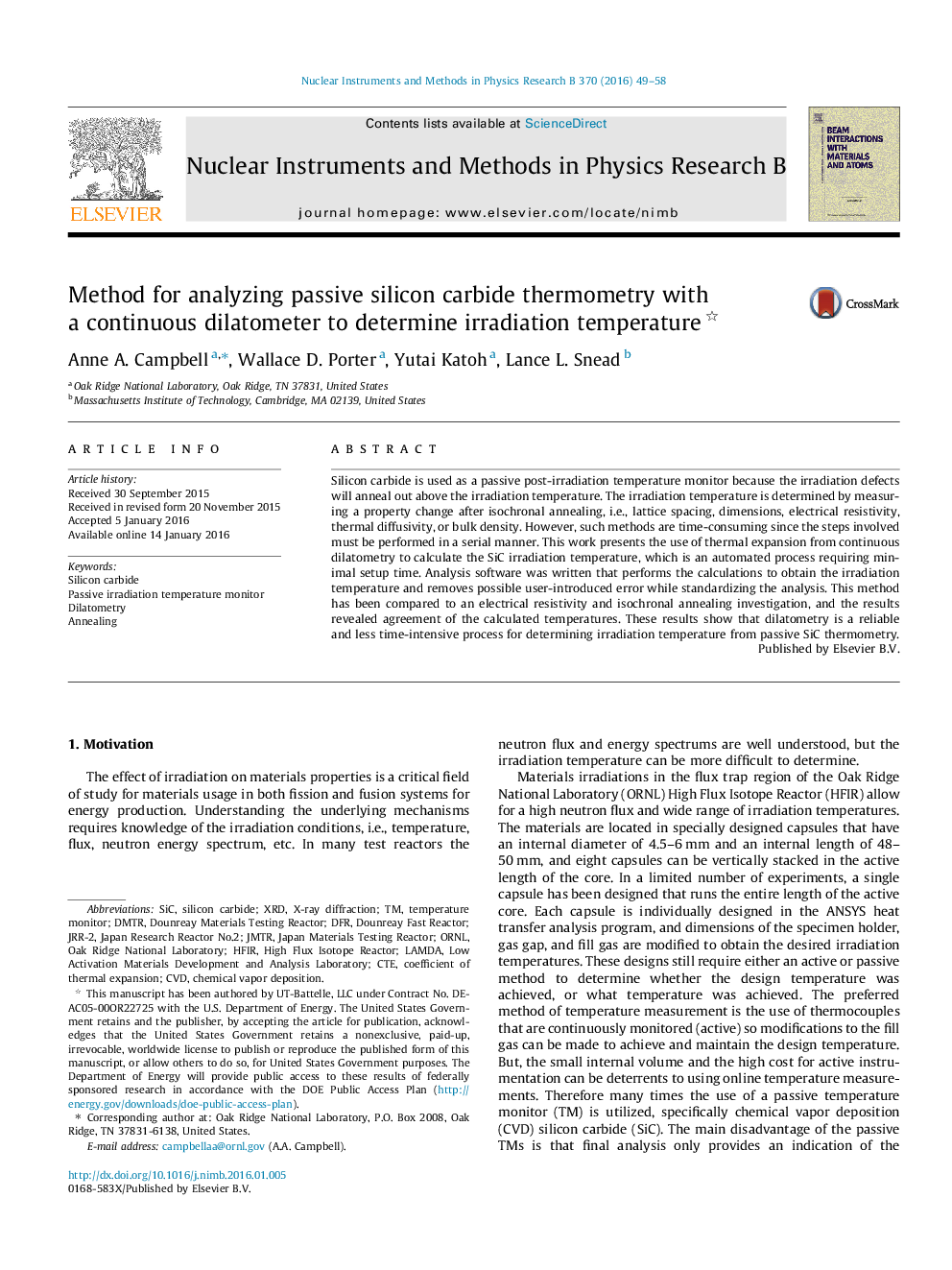| Article ID | Journal | Published Year | Pages | File Type |
|---|---|---|---|---|
| 1681760 | Nuclear Instruments and Methods in Physics Research Section B: Beam Interactions with Materials and Atoms | 2016 | 10 Pages |
Abstract
Silicon carbide is used as a passive post-irradiation temperature monitor because the irradiation defects will anneal out above the irradiation temperature. The irradiation temperature is determined by measuring a property change after isochronal annealing, i.e., lattice spacing, dimensions, electrical resistivity, thermal diffusivity, or bulk density. However, such methods are time-consuming since the steps involved must be performed in a serial manner. This work presents the use of thermal expansion from continuous dilatometry to calculate the SiC irradiation temperature, which is an automated process requiring minimal setup time. Analysis software was written that performs the calculations to obtain the irradiation temperature and removes possible user-introduced error while standardizing the analysis. This method has been compared to an electrical resistivity and isochronal annealing investigation, and the results revealed agreement of the calculated temperatures. These results show that dilatometry is a reliable and less time-intensive process for determining irradiation temperature from passive SiC thermometry.
Keywords
Related Topics
Physical Sciences and Engineering
Materials Science
Surfaces, Coatings and Films
Authors
Anne A. Campbell, Wallace D. Porter, Yutai Katoh, Lance L. Snead,
